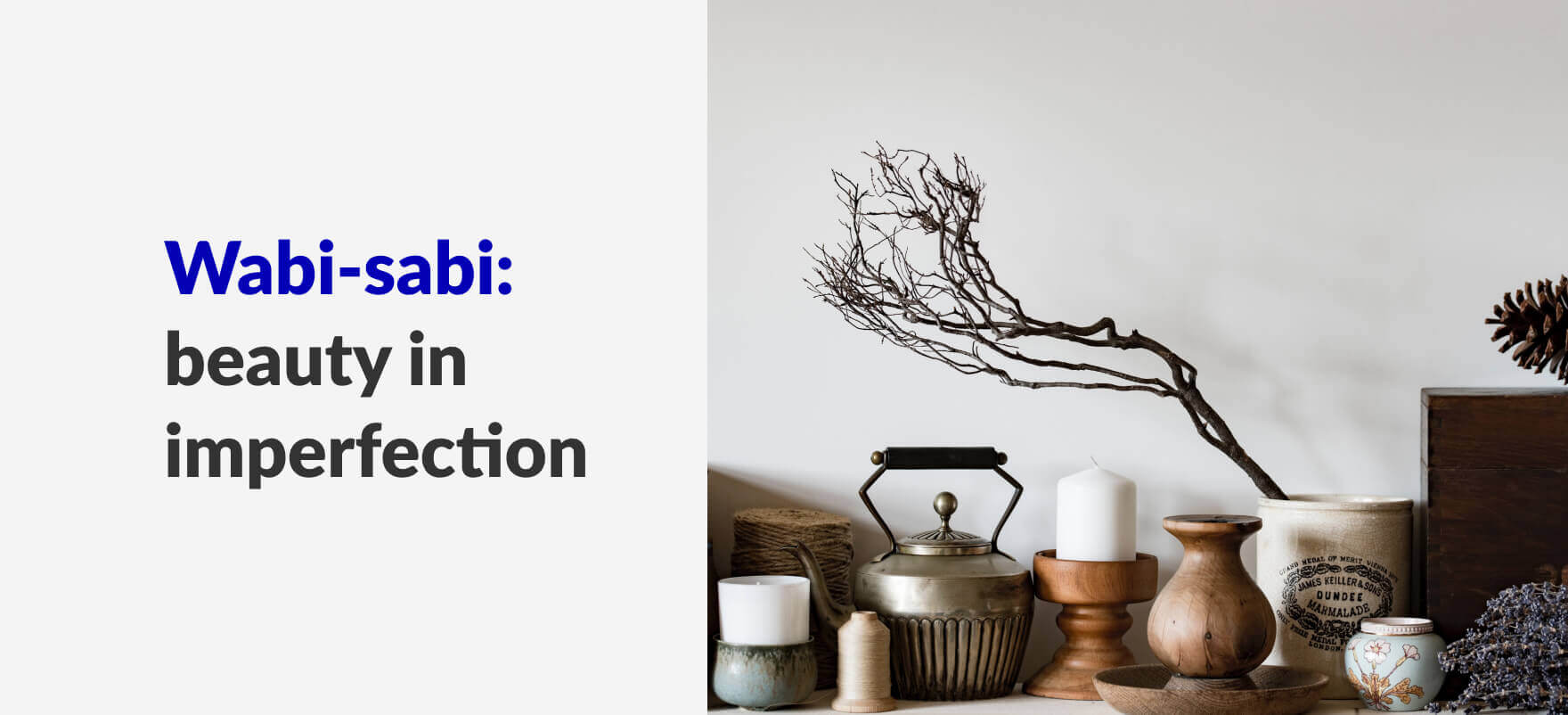Most designers tend to focus much more on smooth lines, symmetry, and perfection. In this article, we are going to explore a different philosophy where we achieve aesthetic balance in our designs through imperfections: wabi-sabi.
What does wabi-sabi mean?
To better understand the concept of wabi-sabi, let’s divide the word itself into two parts: Wabi & Sabi.
Wabi: simple and natural beauty attained through subtle imperfections.
Sabi: beauty that comes with time or beauty that arrives as the product ages.
Combining the two, wabi-sabi simply means finding beauty in imperfections. The term wabi-sabi comes from an ancient Japanese world view, later popularized as an aesthetic form in the west by Leonard Koren.
While designing for wabi-sabi, we try to achieve aesthetic simplicity through the product’s imperfections, natural feel and sometimes incompleteness.
Wabi-sabi aesthetics promotes the use of worn-out or aged elements for design. The basic guiding principle is that we admire the beauty in products that follow the basic rule of life: growth, decay, and death.

Wabi-sabi Examples
Would the Leaning Tower of Pisa be so iconic without the lean? Probably not.

The unique imperfection of this building is what makes this a tourist attraction. People tend to value the uniqueness of any design that has occurred naturally.
Let’s take a look at another example: the Venus de Milo. Venus de Milo is one of the most popular statues in the world. The most notable characteristic of this statue is that it is incomplete.

So how does Venus de Milo successfully bring in large crowds? People tend to explore the artistic value of incompleteness. They tend to fill in the gaps with their imagination. This shows how the same philosophy of wabi-sabi incompleteness can affect the value of a product.
Wabi-sabi also celebrates the imperfection and rawness of handcrafted products. Let’s take a handcrafted bowl as an example. The irregularities in its shape, the small cracks & pores through its surface, and the roughness in the texture bring out its uniqueness that a machine finished perfect bowl can’t.

The hand-drawn decorations make sure every piece created has its unique character, blemishes, and a sense of genuine effort that has been put to the craft.
Understanding the Wabi-sabi Lifestyle
Wabi-sabi as a design principle not only outlines guidelines for product design but is also looked upon as a lifestyle by many people.
The Japanese think it strange we paint our old wooden houses when it takes so long to find the wabi in them. They prefer the bonsai tree after the valiant blossoming is over, the leaves fallen. When bareness reveals a merit born in the vegetable struggling.
― Jack Gilbert (Collected Poems)
Highlighting a repair defect of any damaged object signifies the journey of that object through time. The patch-work sewed in a cloth has its own story to tell. What this enforces is the philosophy of the living, their growth, and eventually death.
…in repairing the object you really ended up loving it more, because you now knew its eagerness to be reassembled, and in running a fingertip over its surface you alone could feel its many cracks – a bond stronger than mere possession.
― Nicholson Baker (Room Temperature)
Integrating Wabi-sabi Lifestyle through Interior Design
Wabi-sabi aesthetic has become more popular with time as interior designers have adopted this philosophy into their designs. People decorate their interiors with elements found in nature or elements that complement the blemishes of their surroundings. Some designers even aim for a rustic look.

We can implement wabi-sabi by complementing the wall colors and its aged patches with appropriately colored furniture.
Using natural and aged wood for furniture and careful placement of items is another way of implementing wabi-sabi. We have to remember that Wabi-sabi does not promote shabby work. Focus on simplicity, intelligent placement, and complement through contrast.

While wabi-sabi does promote aesthetics through imperfections, a general understanding of how to balance aesthetics and usability is important. I would highly suggest you read up on my article on the Aesthetic Usability Effect to understand how to bring upon this balance.
If you want to explore more, take a look at my articles on the basic principles of design and elements of design to further explore a different view on design philosophy.
